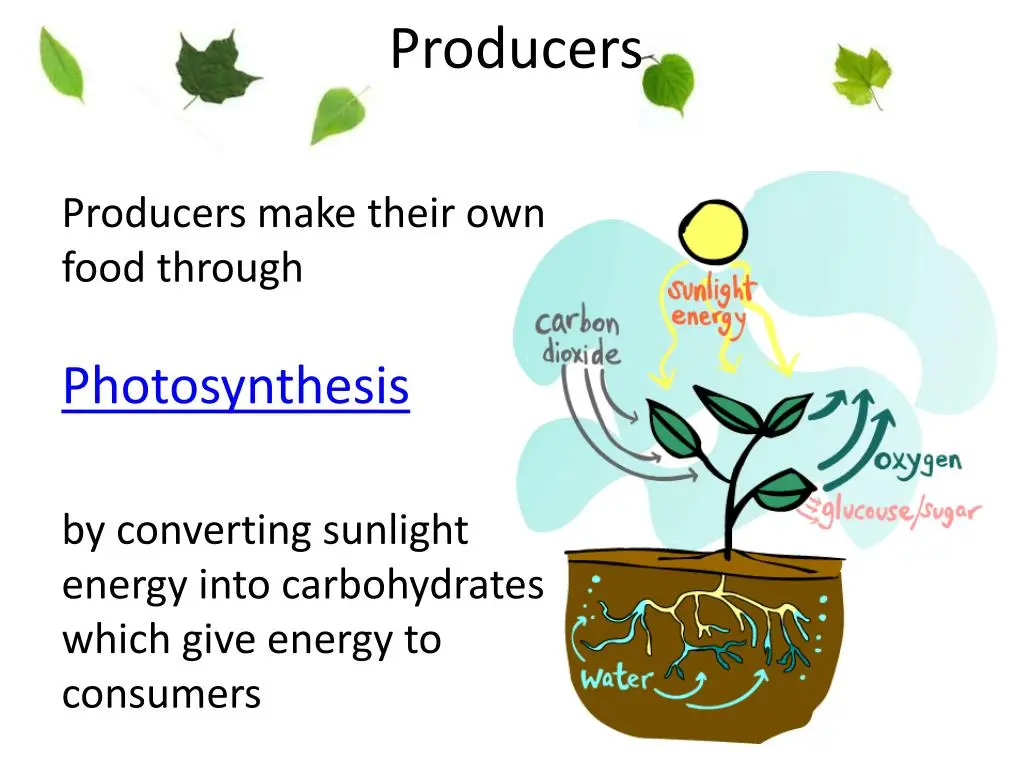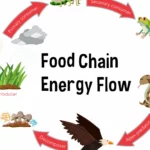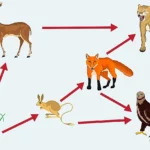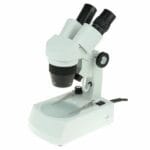Get ready to dive into the thrilling world of science! We’re going to explore the amazing job that “Producers” do in keeping our planet alive and helping scientists make groundbreaking discoveries. These special organisms have a unique ability to make their own food, which is like having a superpower. Plus, we’ll find out how scientists use producers in their experiments to learn more about the world around us. So, buckle up and let’s get ready to unravel the secrets of these fascinating creatures!
What is a Producer in Science?
The word “producer” takes on a couple of different meanings in the science world. Let’s break it down:
1. Producers as Nature’s Food Factories
Imagine a bustling factory, but instead of churning out gadgets, it’s making food—from scratch! That’s essentially what producers do in ecosystems. These incredible organisms have the unique ability to whip up their own meals using simple ingredients like sunlight, water, and carbon dioxide. They’re like the ultimate chefs of the natural world!
Think about plants soaking up sunshine and using it to create sugars through photosynthesis. Or picture tiny algae floating in the ocean, doing the same thing. These are prime examples of producers. They form the bedrock of ecosystems, providing the essential energy that fuels all other living things. Without producers, the entire food chain would crumble!
Here’s a quick look at some superstar producers:
| Type of Producer | Examples |
|---|---|
| Plants | Trees, grasses, flowers, ferns |
| Algae | Seaweed, kelp, phytoplankton |
| Bacteria | Cyanobacteria (blue-green algae) |
2. Producers as Science Project Heroes
Now, let’s shift gears from the natural world to the exciting realm of scientific research! In this context, a producer isn’t making food, but they’re just as vital to the success of a project.
Think of a producer as the conductor of an orchestra. They might not be playing an instrument, but they ensure everyone is in sync, playing the right notes, and creating beautiful music together.
In a scientific project, the producer is the one who keeps things running smoothly. They’re the organizers, communicators, and problem-solvers. They work behind the scenes, making sure the research team has the resources they need, deadlines are met, and findings are shared with the world. Producers are the unsung heroes who help bring groundbreaking scientific discoveries to life!
Learn more about which organism is an example of a producer. Get to know more about the producer consumer decomposer** and how it works.
Producers in Ecosystems: The Foundation of Life as We Know It
Imagine a world without plants, those vibrant green beings we often take for granted. It’s hard to picture, right? That’s because these incredible organisms, along with algae and some types of bacteria, are the backbone of virtually all ecosystems on Earth. We call them “producers” because they have this amazing ability to make their own food, a bit like nature’s very own chefs!
How do they do it? They’ve mastered the art of photosynthesis, a process that harnesses the sun’s energy to transform simple ingredients like water and carbon dioxide into glucose, their primary energy source. Think of it like baking a cake: sunlight acts as the oven, water and carbon dioxide are the basic ingredients, and glucose is the delicious cake that fuels the producers’ growth. But here’s the best part: this “baking” process also releases oxygen into the atmosphere, the very air we breathe. Talk about a win-win situation!
Producers form the first link in a chain reaction of energy transfer known as the food chain. They’re like the foundation of a pyramid, providing essential nutrients and energy for everything else that lives in the ecosystem. Herbivores, the plant-eaters, take a bite out of producers, gaining energy from them. Then, carnivores, the meat-eaters, consume the herbivores, continuing the energy flow. It’s a delicate balance, and the health and abundance of producers directly impact every other organism in the ecosystem, all the way up to the top predators.
| Type of Ecosystem | Example Producers |
|---|---|
| Forest | Trees, shrubs, ferns |
| Grassland | Grasses, wildflowers |
| Ocean | Phytoplankton, algae |
| Freshwater lake | Algae, aquatic plants |
From towering trees in lush forests to microscopic phytoplankton drifting in the ocean, producers come in all shapes and sizes. Their roles may differ, but their importance remains the same: they are the foundation of life as we know it, and understanding their vital role in maintaining a healthy planet is more crucial than ever.
From Sunlight to Sustenance: How Do Producers Make Their Own Food?
These amazing organisms are like the superheroes of the natural world, forming the bedrock of every food chain and fueling life as we know it.
Autotrophic Sustenance: The Powerhouse of Life
Think of producers as self-sufficient factories, whipping up their own food from scratch. Scientists call them “autotrophs,” which basically means “self-feeding.” Unlike animals like us (the “heterotrophs”) who need to munch on other living things for energy, autotrophs have a superpower: they can grab energy directly from their surroundings and use it to build their own meals.
From Sunshine to Sugar: The Magic of Photosynthesis
Photosynthesis is like a culinary masterpiece orchestrated by plants and other clever organisms. Imagine using sunlight as fuel, air (specifically carbon dioxide) as an ingredient, and water as, well, water, to cook up a batch of sugary goodness! That’s photosynthesis in a nutshell. This sugar, called glucose, is like the building block for plants, giving them the energy to grow tall and produce flowers and fruits.
Chemosynthesis: Life Finds a Way, Even in the Dark
Photosynthesis is pretty awesome, but what about places where the sun doesn’t shine, like the deep, dark ocean floor? Don’t worry, life finds a way! Down in these hidden depths, and even beneath the Earth’s surface, some pretty incredible organisms have figured out how to make food using “chemosynthesis.” Instead of sunlight, they tap into the chemical energy stored in inorganic compounds, like those found near hydrothermal vents. It’s like cooking with geothermal energy! These chemosynthetic superstars prove that life is full of surprises and can thrive in even the most unexpected places.
Beyond Photosynthesis: Unveiling the World of Chemosynthetic Producers
Imagine a world without sunlight. It sounds pretty bleak, right? But in the deep ocean, where sunlight can’t reach, life thrives anyway. How is that possible? Enter chemosynthesis, a process even cooler than its more famous cousin, photosynthesis.
Chemosynthesis is like nature’s own chemistry lab. Instead of using sunlight for energy, it taps into the power of chemical reactions. Think of it like this: these incredible organisms, mostly bacteria and archaea, are like tiny chefs, whipping up food from ingredients like sulfur and methane. This process transforms simple inorganic compounds into organic matter, the building blocks of life.
And where does this magical process happen? In some of the most extreme environments on Earth! We’re talking deep-sea hydrothermal vents, where superheated water spews from the ocean floor, and cold seeps, where methane and other hydrocarbons bubble up from below. These places might seem harsh, but they’re actually teeming with life, all thanks to the power of chemosynthesis.
While photosynthesis is the main event in sun-drenched surface waters, as we journey deeper into the ocean’s twilight zone, chemosynthesis takes center stage. It’s the driving force behind entire ecosystems, supporting a dazzling array of creatures, from giant tube worms to ghostly white crabs.
Think of it like this:
| Process | Energy Source | Organisms | Ecosystem |
|---|---|---|---|
| Photosynthesis | Sunlight | Plants, algae | Forests, grasslands, coral reefs |
| Chemosynthesis | Chemical Reactions | Bacteria, archaea | Deep-sea vents, cold seeps |
Chemosynthesis reminds us that life finds a way, even in the most unexpected places. It broadens our understanding of life on Earth and hints at the possibilities of life beyond our planet. So the next time you picture a thriving ecosystem, don’t forget about the hidden wonders fueled by chemosynthesis, a testament to the ingenuity and resilience of life itself.
FAQ
Q1: What is a producer in science?
A1: A producer is an organism that can produce its own food from inorganic substances. Producers are the foundation of most ecosystems and are an integral part of the food web.
Q2: What is the role of producers in an ecosystem?
A2: Producers are essential in ecosystems as they form the base of the food chain, providing nourishment for other organisms. Without producers, consumers and decomposers would not have a food source.
Q3: What are the two main types of producers?
A3: The two main types of producers are photosynthesizers and chemosynthesizers. Photosynthesizers use sunlight to create food, while chemosynthesizers use chemical energy to create food.
Q4: What is the process by which producers create food?
A4: Photosynthesizers use the process of photosynthesis to create food. Photosynthesis uses sunlight, carbon dioxide, and water to create glucose and release oxygen. Chemosynthesis is the process by which chemosynthesizers create food.
Q5: Why are producers important for life on Earth?
A5: Producers are important for life on Earth because they are the primary source of energy for all living organisms. Without producers, there would be no food for consumers and decomposers, and life on Earth would not be possible.
- Georgia Platform: A Southern Strategy, 1850s - March 31, 2025
- How many weeks is 40 days: Quick Conversion Guide for Accurate Results - March 31, 2025
- How many feet is 300 meters? 984 Feet: Understand Length Conversions Easily - March 31, 2025
















